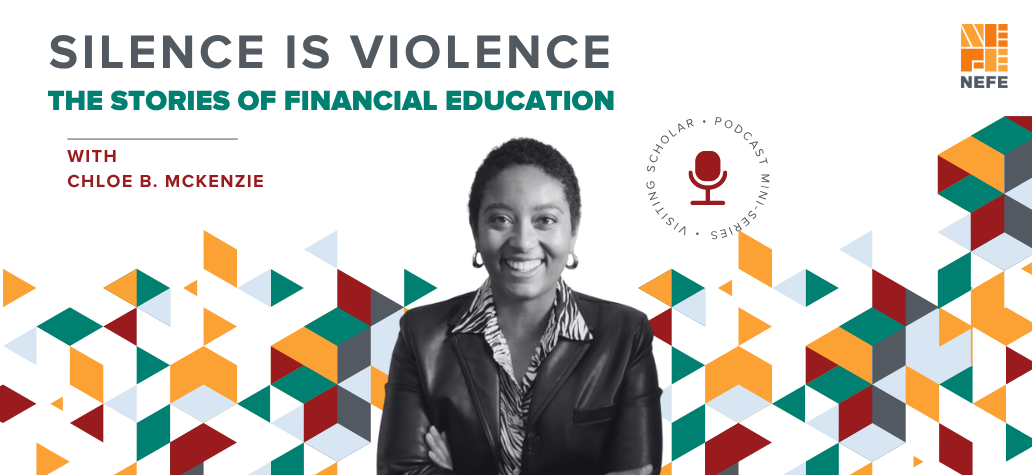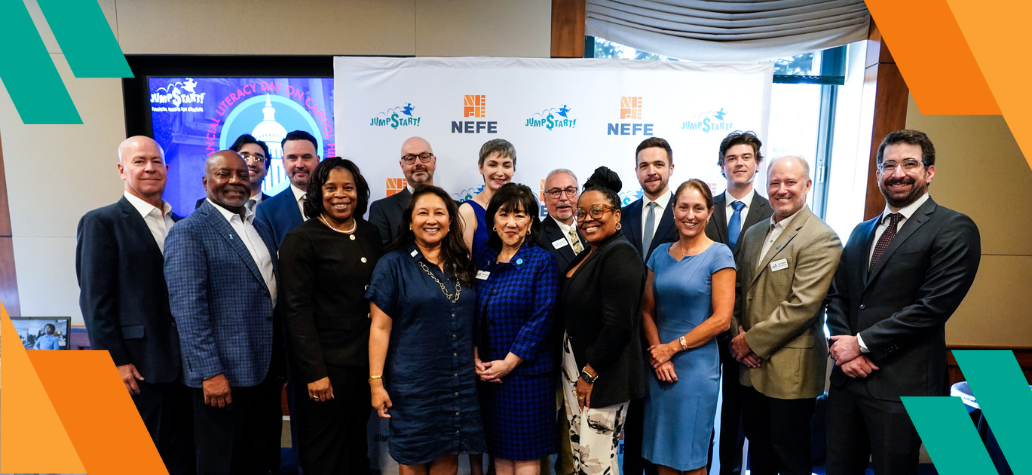The verve of recognition for Financial Literacy Month—also known as Financial Capability Month—typically subsides as we move past April. However, our field of committed financial education teachers, researchers and advocates will not become complacent. We are aware of all we must do collectively to meet the ongoing demand to bolster quality instruction.
The nationwide momentum is evident. On March 22, Florida passed SB 1054 into law. This legislation mandates a stand-alone financial education class, making Florida the 11th and largest state to have such a requirement. Of important note is that this bill received full support from representatives on both sides of the political aisle. Other recent examples of state-level movement include Georgia’s HB 681, which passed through the legislature in early April and is on Governor Brian Kemp’s (Republican) desk for signature; Minnesota’s HF 4207 bill that would create a required personal finance class; and Tennessee, which already requires a high school course in personal finance, introduced SB 2174 aimed to extend instruction to younger students in sixth grade through eighth grade. A recent conversation hosted by CNBC brought together New Jersey Governor Phil Murphy (Democrat), Mississippi Governor Tate Reeves (Republican) and Nevada Governor Steve Sisolak (Democrat) for a conversation about strategies to deliver this learning within the capacities of schools and teachers. These leaders collectively acknowledge that young people depend upon financial knowledge to prevent common mistakes in early adulthood. While parents are pivotal in teaching, influencing and role modeling, state curriculum helps bridge this gap. It’s heartening to witness the growing trend of states prioritizing financial education in public schools. Currently, there are 52 bills in 26 states addressing personal finance at the K-12 level. [For more detail on which states are offering personal finance instruction, read the latest Survey of the States from the Council for Economic Education (CEE).]
A newly released poll from the National Endowment for Financial Education® (NEFE®) recently asked U.S. adults if they think their state should require a semester- or year-long course in personal finance education for high school graduation. Nearly nine in 10 (88%) say they believe it should be required. Another 80% of U.S. adults said they wished they were required to take a course themselves during high school.
Americans overwhelmingly recognize the importance of learning money skills at an early age and there is demonstrated national support for personal finance to be a part of learning in all schools. Despite this widespread positive sentiment, there have been instances of politics hindering the creation of effective financial education legislation. Arguably there are challenges with implementation, but research shows there are clear benefits to a thoughtfully crafted, well-resourced financial education requirement. Students from states requiring a financial education course are more likely to display positive financial behaviors. Additionally, those who take a financial education course with a well-trained teacher significantly increase their financial knowledge. The data reinforce that financial education matters and establishes a solid foundation for how individuals will manage their financial lives as they emerge into adulthood. Every student deserves these potentially life-changing effects, but regrettably not every student receives them.
Students in well-resourced school districts are far more likely to receive personal finance instruction. Competent policy offers a way to mitigate these uneven experiences. Legislative action, state support and access to trusted resources make a massive difference in leveling equitable access for all students. A thorough and effective state requirement ensures that all schools can offer this vital class to their students regardless of zip code. But to be clear, just because a state has a financial education mandate in place does not mean it is effective. Quality of instruction is equally as important as access. K-12 schools must ensure that the instruction is targeted, appropriate and measured, and teachers are confident to deliver it adequately.
The latest NEFE poll finds 75% of U.S. adults consider spending and budgeting to be among the most important topics to teach in personal finance instruction, followed by managing credit (55%), saving (49%) and earning income (47%)* The National Standards for Personal Financial Education, co-created by the Jump$tart Coalition for Personal Financial Literacy and CEE, offer clear guidance on what subject areas should be addressed. Educators can readily access Jump$tart’s clearinghouse resources to meet these learning standards. States do not need to reinvent the wheel in developing new courses and can take advantage of the already robust network of existing financial education resources.
Financial inclusion is a necessary foundation for the success of financial education. Yet, money management knowledge alone cannot solve everything nor overcome inequitable financial services experiences and opportunities—it is an important, but not the sole, factor in strengthening one’s financial well-being. I have dedicated my career to closing educational equity gaps and for the last 12 years have focused exclusively on financial education. At NEFE, we recognize that financial well-being does not happen in a vacuum and that external influences beyond legislation impact it. We are building out our organization’s policy arm to better address governmental interventions’ role in enhancing Americans’ quality of life. Our goal is to elevate effective practices in legislation, fund impactful research to inform policy and advocate for the importance of financial education.
NEFE recently joined FinEd50, a consortium of cross-sector organizations dedicated to improving access to quality financial education for students in all 50 states. I have consistently upheld that systems change must happen through collaboration, so I applaud the power of a network of private, public and governmental organizations united in one goal. Individuals can get involved with advocacy efforts too. Learn what your state is doing with financial education requirements on the National Conference of State Legislatures website. You also can search your individual school’s activities through Jump$tart’s Check Your School. Next Gen Personal Finance also offers advocacy guidance and resources for teachers, parents and students passionate about increasing financial education access.
Successful financial education access on a national scale requires continued collaboration across sectors and we need strong voices from every level. I am inspired and optimistic by the momentum seen across the country. Let’s work together to ensure every student has a chance to gain a critical foundation of financial knowledge and skill.
*Respondents selected up to three response options. The options provided in the survey instrument were “earning income (ex: income types, careers, postsecondary credentials, income taxes)”; “spending and budgeting”; “saving (ex: savings account options and features)”; “investing (ex: investment types, investment risks, returns, diversification)”; “managing credit (ex: interest rates, types of credit, credit reports)”; and “managing risk (ex: insurance, identity theft, transferring risk).”
Billy J. Hensley, Ph.D., is president and CEO of the National Endowment for Financial Education (NEFE), a nonprofit foundation that champions effective financial education. NEFE is the independent, centralizing voice providing leadership, research and collaboration to advance financial well-being.



